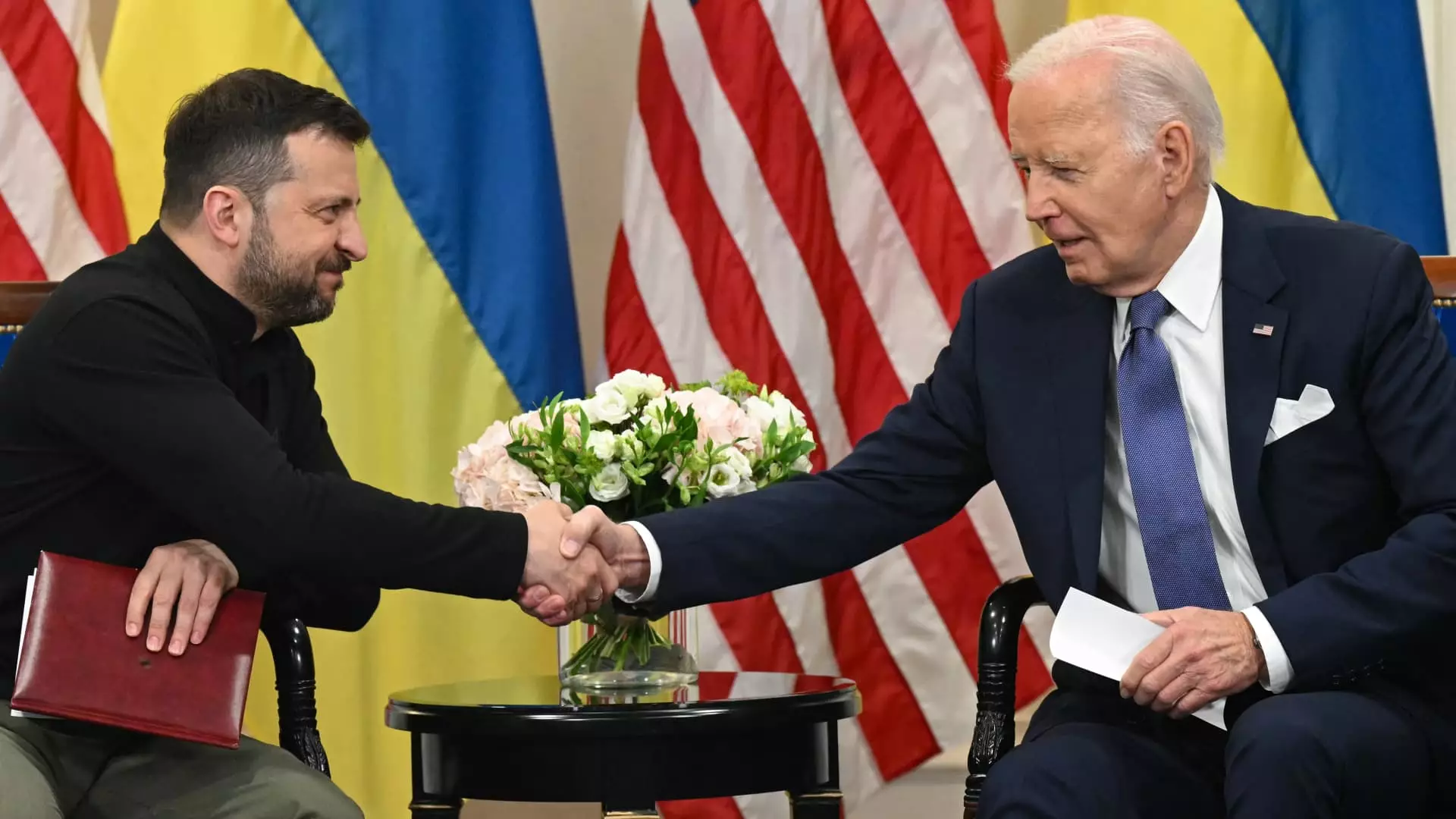The geopolitical landscape has shifted dramatically since the onset of the Russian invasion of Ukraine, prompting significant responses from the international community. Among these, the United States has played a pivotal role in providing extensive military and economic aid to support Ukraine’s government and military efforts. Recently, President Joe Biden announced nearly $6 billion in additional assistance, a clear indication of the U.S.’s commitment even as his presidency nears conclusion. This article delves into the implications of this aid, explores the potential ramifications of a changing political landscape in the U.S., and highlights the ongoing challenges faced by Ukraine.
In a bid to reinforce Ukraine’s battle capabilities amid ongoing Russian aggression, the Biden administration announced a multifaceted package that includes both military assistance and direct budget support. The military aid, amounting to $2.5 billion, is structured through two primary channels: $1.25 billion sourced from U.S. stockpiles and an additional $1.22 billion from the Ukraine Security Assistance Initiative (USAI). The former allows for quicker deployment of resources to the battlefield, whereas the latter facilitates procurement from defense contractors, often resulting in delays.
On the budgetary front, Treasury Secretary Janet Yellen emphasized the importance of the $3.4 billion in budget assistance. This funding aims to sustain essential government services, such as salaries for teachers and public employees, which is critical for maintaining morale and stability in a war-torn nation. The cumulative support from the U.S. since the invasion now exceeds $30 billion in budget assistance alone, reflecting an overwhelming commitment to Ukraine’s governance alongside its military needs.
As the U.S. shifts toward a new administration under President-elect Donald Trump, uncertainties loom over the continuity of this foreign aid trajectory. Trump has been vocal in his skepticism about U.S. involvement in the Ukraine conflict, suggesting that European allies ought to shoulder a greater portion of the financial burden. Given that the Republican Party will control both houses of Congress starting next month, a shift in priorities regarding Ukraine cannot be dismissed. Some factions within the party are already expressing hesitance in endorsing further military support, with calls for a reevaluation of the U.S.’s role in international conflicts gaining traction.
Given these developments, the future aid landscape for Ukraine hinges not just on Trump’s policies but also on Congressional dynamics that are likely to influence funding decisions. There is a concern that a reduced commitment could undermine Ukraine’s position both on the battlefield and internally, exacerbating an already precarious situation.
Adding another layer of complexity to this conflict are reports indicating that Russia has enlisted North Korean troops to bolster its military efforts. These forces have suffered heavy casualties, with statements from U.S. officials indicating serious losses in enclosed combat. This grim reality underscores the brutal nature of the conflict, where both sides are willing to sacrifice human life in pursuit of strategic dominance.
The influx of foreign troops into the conflict highlights the increasingly international nature of the war, presenting a broader challenge for Ukraine’s aspirations of sovereignty and independence. The presence of foreign combatants complicates negotiations and further destabilizes an already tense environment, where questions of legitimacy and sovereignty are at stake.
Addressing long-term sustainability for Ukraine amid this ongoing conflict requires a comprehensive strategy that transcends immediate military needs. It encompasses diplomatic efforts, economic revitalization, and continued international support. Yellen’s recent statements highlight the necessity for sustained economic aid to maintain vital government functions, emphasizing that Ukraine’s stability aligns with U.S. national interests.
Moreover, the administration’s approach to sanctions against Russia must remain authoritative, ensuring that economic pressure continues to impede Moscow’s capacity for aggression. The U.S. remains in a critical position, and future decisions will not only determine the fate of Ukraine but will also resonate with global perceptions of American foreign policy.
The U.S. commitment to Ukraine showcases both the resolve to support allies in crisis and the complexities inherent in international politics. The forthcoming months will be crucial in shaping both Ukraine’s future and the strategic posture of the United States on the global stage. Aligning military aid, budget assistance, and diplomatic initiatives within the evolving political context remains paramount for securing a lasting solution.


Leave a Reply